I remember back in the day when I started my audiophile journey with the FiiO E17 Alpen amplifier and the Ultrasone Pro 900 headphones for deep bass performance. The E17 headphone DAC amp worked wonders and managed to transform the sound from the Ultrasone Pro 900 into a beat powerhouse with superb bass response and crystal clear highs. I still smile when I remember listening to the Pro 900s, although I have moved on to the Meze Classics 99 and the more sophisticated Sennheiser HD 800 S headphones, which I currently pair with the FiiO K7 DAC amp combo. Over the years I have accumulated a large library of headphones which I still listen to from day to day, and I have started to dabble in planar electric headphones such as the HIFIMAN Sundara which have a very unique sound signature when properly amped.
If you are into high-end listening and are getting a high-impedance headphone, getting a DAC amp combo is definitely a must have. I have listed the 10 best DAC amp combos that I myself have tested and come to like – each amp brings a unique sound signature and flavor to the overall sound performance, and adds depth and punch with its unique amplification properties. If you are looking for the best DAC amp combos to upgrade your listening experience, or if you are just starting out experimenting with audiophile-grade headphones, I would recommend getting one of these to get the most out of your headphone sound performance.
#1 Best Overall: FIIO K11 Desktop 1400W DAC Amp Combo
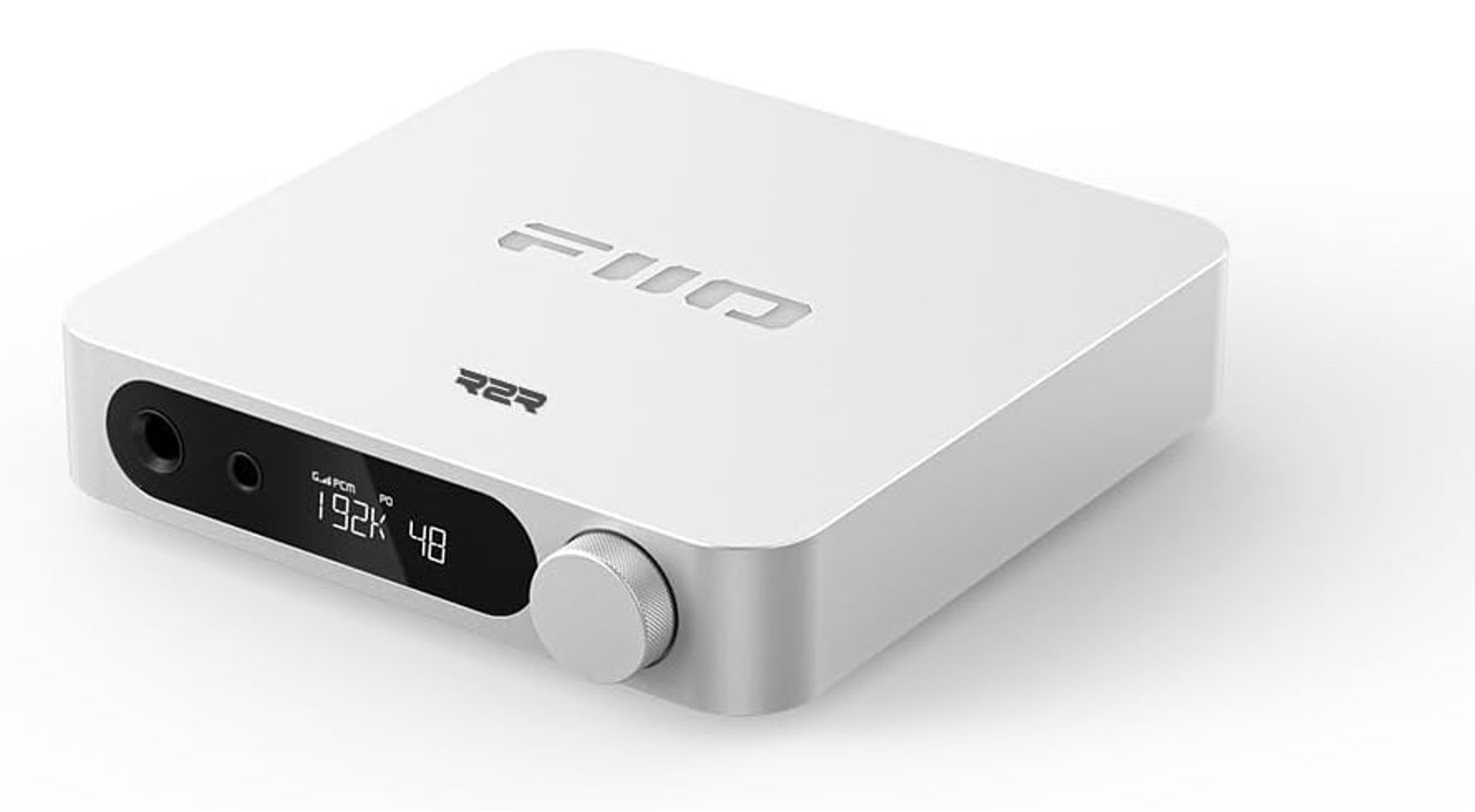
The FIIO K11 Desktop DAC & Amplifier is built to deliver a solid and high-fidelity listening experience, and is one of the best dac amp combos you can find. With a maximum power output of 1400mW, this unit has more than enough strength to drive high-impedance headphones up to 350 ohms, making it a great choice for demanding audiophile gear. The variety of inputs and outputs (USB, coaxial, optical, RCA, and both 4.4mm and 6.35mm headphone jacks) adds a lot of flexibility, allowing it to fit into different setups without much hassle. The high-definition VA display is a nice touch too—it gives clear visual feedback on volume, gain, and sampling rate, making adjustments more intuitive. This combination of power, connectivity, and usability makes the K11 a serious contender in the DAC/amp space.
When I tested the FIIO K11 with the Sennheiser HD660S (a 150-ohm headphone known for its balanced and detailed sound), I liked how clean and controlled the audio felt. The K11 brought out a level of clarity in the midrange that made vocals sound natural and well-defined, while the bass had a good sense of depth without feeling bloated. Treble was smooth and extended without being overly sharp, which can sometimes be an issue with lower-quality DACs. Switching between gain modes also helped tailor the sound to different listening preferences. On high gain, the HD660S had a stronger dynamic punch, making rock and orchestral music sound more engaging. The noise floor was impressively low, meaning even at higher volumes, I didn’t hear unwanted hiss or distortion. For an all-in-one DAC/amp at this price, it handled these headphones effortlessly.
The design of the FIIO K11 is sleek and modern. The aluminum alloy body gives it a premium feel while keeping it lightweight and compact—perfect for a clean desktop setup. The layout is practical, with easy access to the headphone jacks and volume knob, which has a smooth and satisfying resistance when adjusting levels. The VA display is sharp and well-lit, making it easy to see information at a glance, even in a dimly lit room. One thing I appreciated was how the unit stayed relatively cool even after extended use, suggesting efficient heat management. Overall, it feels like a well-thought-out device that blends style with practicality.
Comparing the FIIO K11 to other DAC/amp combos in a similar range, I think the FiiO K11 a great choice and provides good value for money. Something like the Schiit Magni/Modi stack offers strong competition with a slightly warmer sound signature, but the K11’s all-in-one design and more modern connectivity options (like 4.4mm balanced output) make it more versatile. Personally, I would go with the K11 if I wanted a powerful yet compact unit that could handle a range of headphones and input sources without needing additional gear. The sound performance is clean and detailed, the build is solid, and the ease of use is a big plus. While there are certainly other options out there, I think the K11 strikes a great balance between performance and convenience, making it one of the best dac amp combos if you are looking for a reliable desktop DAC/amp.
#2 Best for Gaming: Sound BlasterX G6 DAC Amp Combo
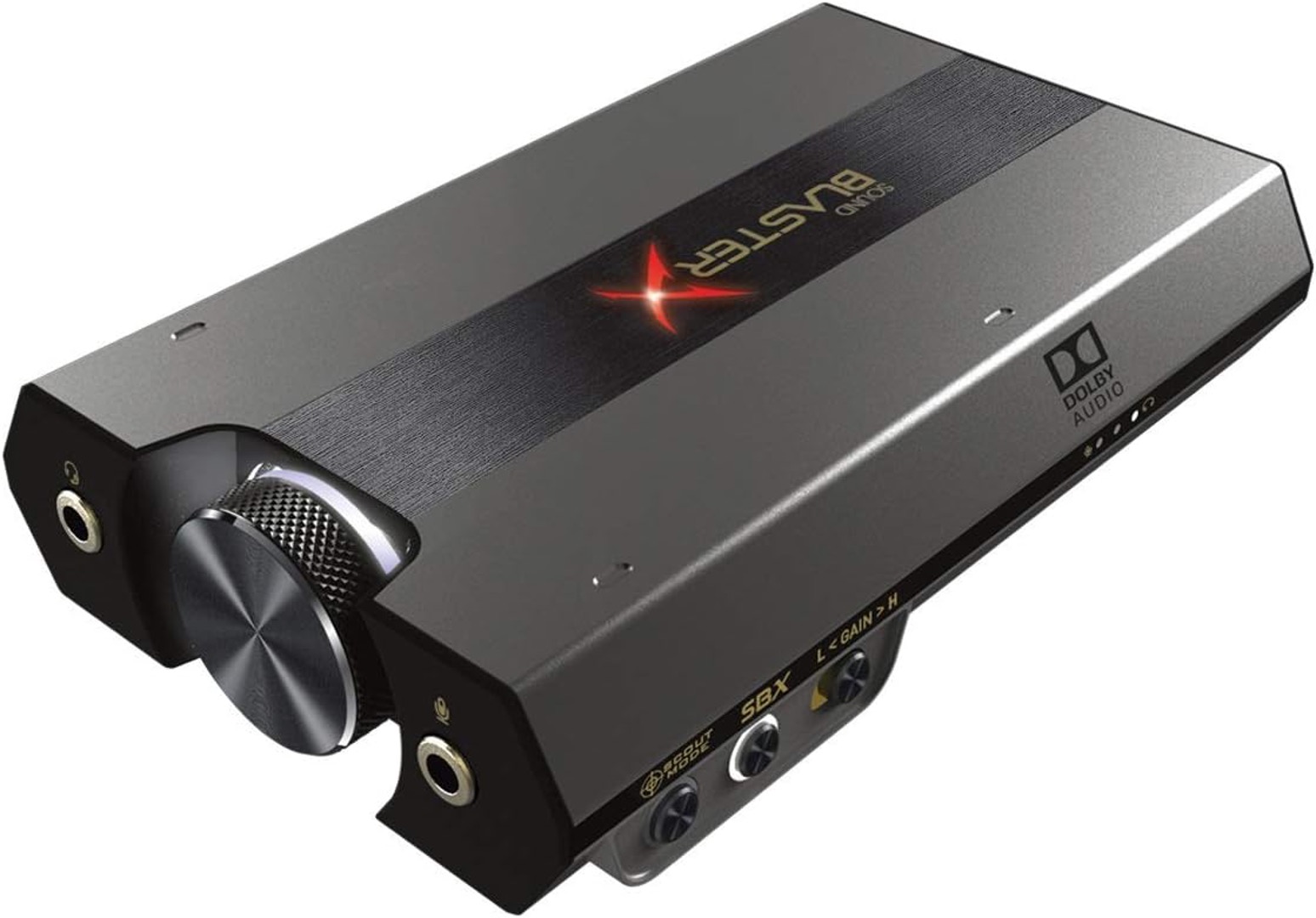
The Sound BlasterX G6 is a compact yet powerful DAC and amp combo designed for gamers and audiophiles who want an immediate upgrade from basic onboard audio. It supports high-resolution 32-bit/384kHz playback with an impressive 130dB dynamic range, which means a much cleaner and more detailed sound compared to built-in motherboard or controller audio. The G6 includes a discrete Xamp bi-amp design, meaning each audio channel gets individually amplified for a more precise and dynamic listening experience. It’s also built with versatility in mind—it works across multiple platforms including PS4, Xbox One, Nintendo Switch, and PC. For gaming, it offers a range of enhancements like 7.1 virtual surround sound, Dolby Digital decoding, Scout Mode (which boosts in-game audio cues), and sidetone volume control for clearer voice chat. With an ultra-low 1-ohm output impedance, it handles everything from sensitive IEMs to high-impedance 600-ohm headphones, making it a solid choice for anyone looking for a capable DAC/amp that delivers both gaming and music performance.
When I tested the Sound BlasterX G6 with the Beyerdynamic DT 990 Pro (a 250-ohm headphone known for its wide soundstage and bright treble), I noticed a big jump in detail and clarity compared to a standard PC or console audio output. The bi-amp design really helped separate the different elements in music and games, making everything sound more layered and immersive. In single-player games, the 7.1 virtual surround sound added a real sense of space, making open-world environments feel more alive. Scout Mode was interesting too—when playing competitive FPS games, I could pick up enemy footsteps more clearly, though it slightly altered the balance of the overall sound. For music, the G6 handled high-resolution tracks well, delivering clean bass without muddiness, a natural midrange, and crisp treble. The DT 990 Pro can sometimes sound a little harsh in the highs, but the G6 kept things controlled without losing detail. Switching between different EQ profiles was quick and easy, and I liked how I could tweak the sound to match different genres or game types.
Design-wise, the Sound BlasterX G6 is compact and practical. The black matte casing gives it a stealthy look that fits well into any setup, and the build quality feels solid without being overly bulky. One of the things I liked was the placement of the volume wheel and profile buttons, which made it easy to adjust settings without having to dig through software menus. The sidetone control was another nice touch, especially for voice chat in multiplayer games where hearing your own voice naturally helps with communication. Connectivity is straightforward with USB and optical inputs, so it’s easy to switch between PC and console without much hassle. The unit runs on USB power, which makes it super portable, though some users might prefer an external power option for added stability in certain setups.
Compared to other DAC/amp combos in the same range, the Sound BlasterX G6 comes highly recommended especially for gaming. Something like the Schiit Hel 2 offers good amplification and microphone support, but it lacks the G6’s surround sound processing and gaming-oriented features. The FIIO K5 Pro is another solid competitor with a more neutral sound, but it doesn’t have the same level of customization or console compatibility. Personally, I would go with the G6 if I wanted a balance between high-quality audio and gaming-focused enhancements. The mix of immersive surround sound, customizable profiles, and a solid amp section makes it a great all-in-one upgrade for gamers who also enjoy high-resolution music. I think that for anyone looking to elevate their gaming experience while still getting a great DAC for music, the G6 is one of the best options in its class.
#3 Best Value: Fosi Audio K5 Pro DAC Amp Combo
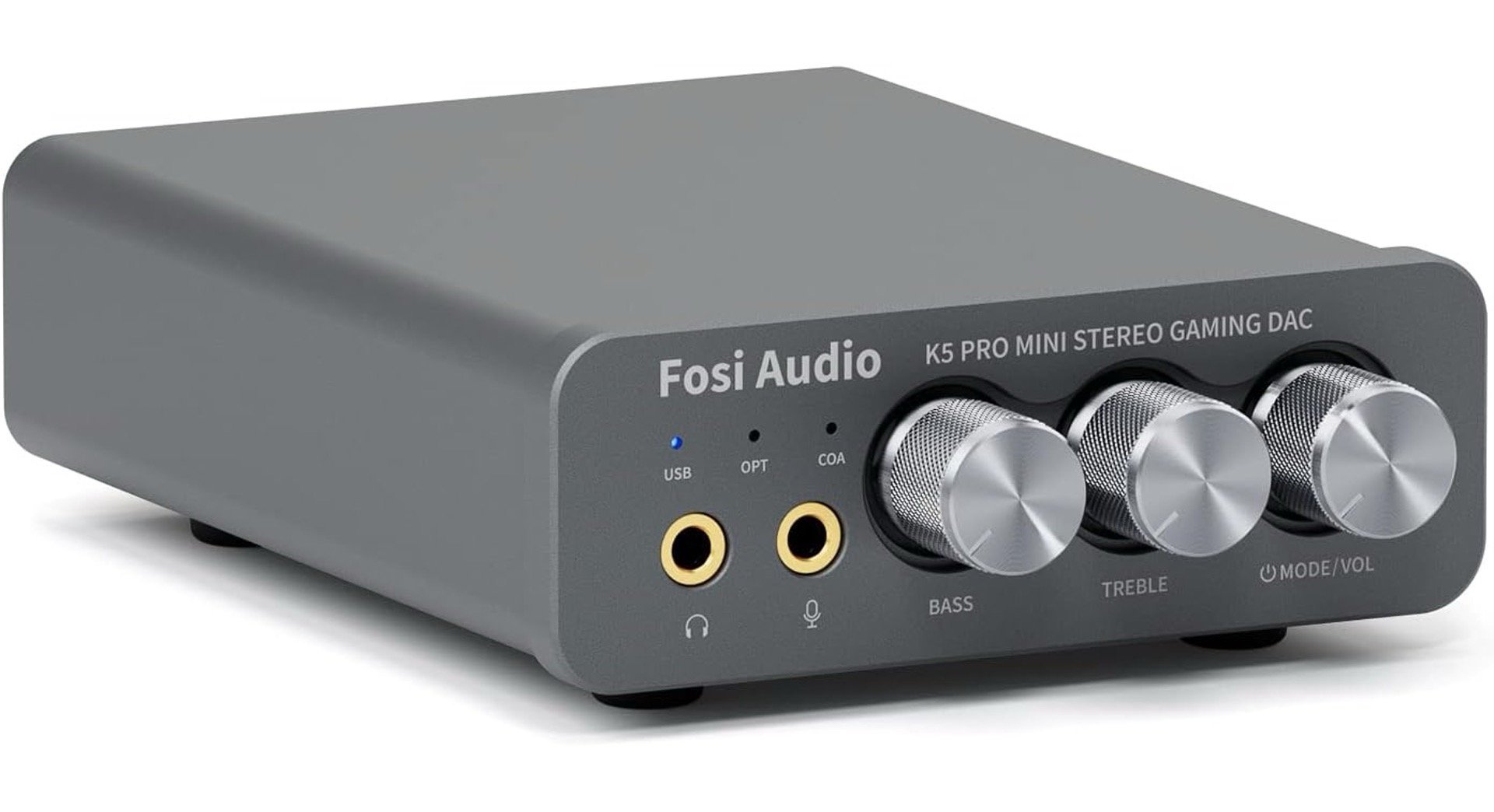
The Fosi Audio K5 Pro is a well-rounded DAC and headphone amplifier designed for both gaming and music listening. It builds on the foundation of the Fosi Audio Q4 with improved audio performance and the added convenience of a built-in microphone function, making it a great choice for gamers who need clear voice chat alongside high-quality audio. The K5 Pro supports USB Type-C, optical, and coaxial inputs, converting those signals into 3.5mm AUX and RCA outputs, giving it a good level of flexibility for different setups. The output power varies depending on headphone impedance (up to 1000mW at 16 ohms), making it suitable for a range of headphones from 16 to 300 ohms. Internally, it uses a Texas Instruments NE5532 op-amp chip, which is known for its low noise and clean sound reproduction. It supports a maximum resolution of 24-bit/96kHz over USB and 24-bit/192kHz over optical/coaxial, which isn’t the highest available but still delivers solid digital audio performance.
When I tested the K5 Pro with the Audio-Technica ATH-M50X (a 38-ohm headphone known for its punchy bass and detailed mids), I noticed that the sound was noticeably cleaner and more controlled compared to plugging directly into my PC’s onboard audio. The bass had more depth and impact without feeling boomy, which made electronic and hip-hop tracks sound more dynamic. The mids were clear and detailed, making vocals in acoustic and rock music stand out nicely. The treble was smooth and didn’t come off as overly sharp, which can sometimes be an issue with budget DACs. I played a few games with it as well (mostly FPS and RPGs), and the positional audio was decent, though not as wide as something with dedicated virtual surround processing. Dialogue and ambient sounds were more defined, making in-game environments feel more immersive. The microphone pass-through function was a useful addition too, especially for online multiplayer, since it allowed me to use a high-quality headset without needing an extra audio interface.
The design of the K5 Pro is simple but practical. The aluminum chassis feels solid, and it’s compact enough to fit neatly on a desk without taking up too much space. One thing I liked was the combination power and volume knob, which made operation straightforward. The addition of bass and treble controls is nice to have as well since it allows for some quick sound adjustments without needing software. The 2-in-1 USB Type-C port for both power and audio input is a smart choice, though it does mean your audio source needs to be connected via USB-A or USB-C, which might not be ideal for some setups. The RCA outputs add extra versatility if you want to hook it up to powered speakers, making it more than just a headphone amp. The overall layout is intuitive, and the buttons and knobs feel responsive without being overly sensitive.
Compared to other DAC/amp combos in the same range, I would say that the Fosi Audio K5 Pro is a pretty solid choice that delivers superb sound performance. It doesn’t have some of the advanced processing found in gaming-specific DACs like the Sound BlasterX G6 (which offers virtual surround and Scout Mode for FPS games), but it makes up for it with a cleaner, more neutral sound and the added flexibility of bass and treble controls. Something like the Schiit Fulla 3 is a close competitor with a similar feature set, but the K5 Pro offers more connectivity options and a slightly more powerful amp section. Personally, I would go with the K5 Pro if I wanted a straightforward DAC/amp combo that sounds good out of the box and works with both headphones and powered speakers. I think that for someone looking for a simple but effective way to upgrade their desktop or gaming audio without spending too much, this is a solid choice.
#4 Best HiFi DAC: FiiO K7 DAC Amp Combo
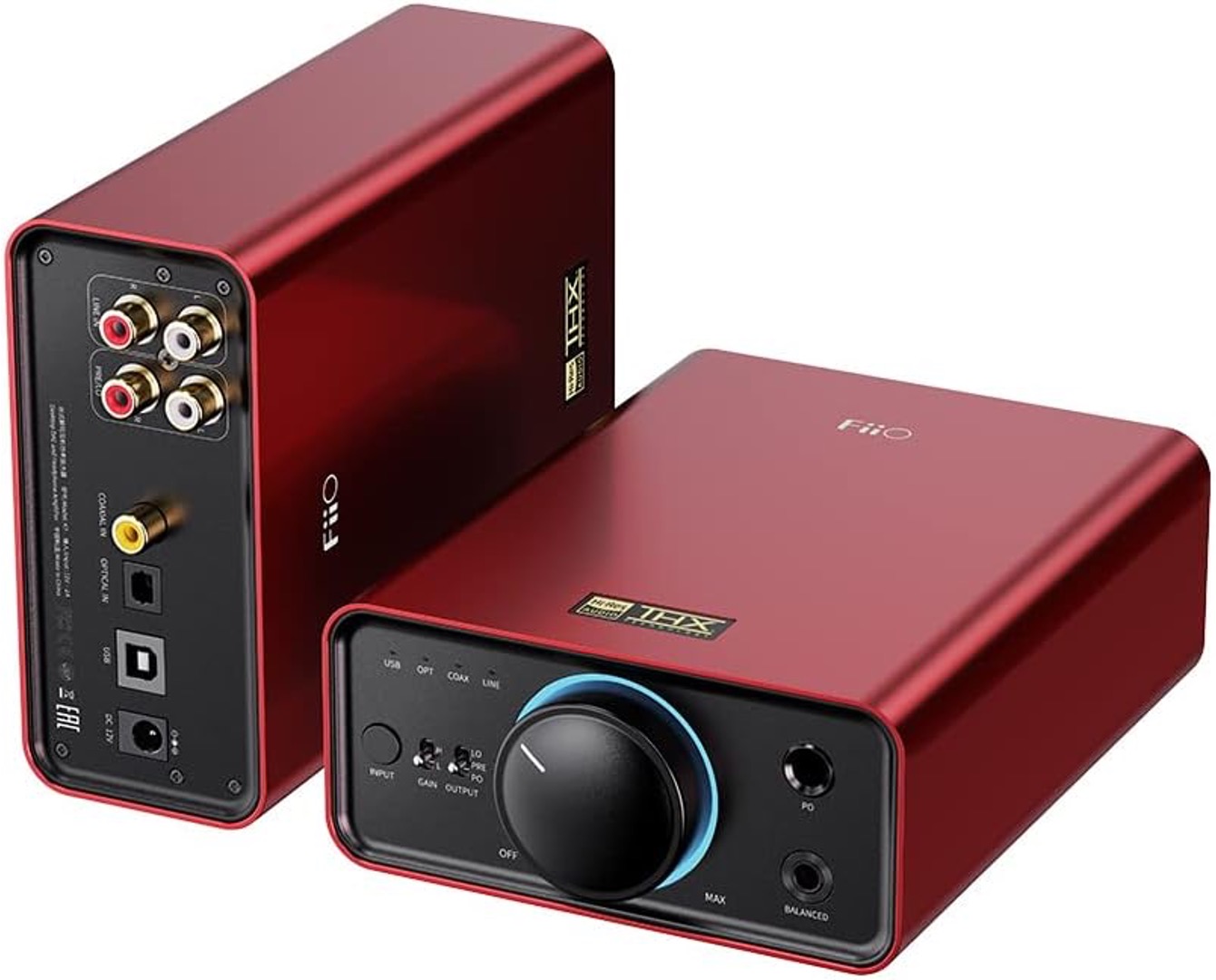
The FiiO K7 is a fully balanced HiFi DAC and headphone amplifier that delivers strong performance for high-fidelity listening. It uses dual AK4493SEQ DACs from AKM and THX AAA 788+ amplifiers, a combination that prioritizes clean, detailed sound with powerful output. With multiple input options, including USB, optical, coaxial, and AUX, it’s easy to integrate into different audio setups, whether for PC, gaming consoles, or other digital sources. The outputs include both single-ended (6.35mm and 3.5mm) and balanced (4.4mm), making it versatile enough for a wide range of headphones. The 2000mW output power under balanced mode means it can handle everything from low-impedance dynamic drivers to more demanding full-size planar magnetic headphones. Additional features like input selection, gain control, and RGB indicator lights make it a well-rounded option for desktop use, offering both usability and strong technical specs in a single unit.
When I tested the K7 with the HIFIMAN Sundara (37Ω planar magnetic headphones), I immediately noticed a difference in control and dynamics compared to weaker amplifiers. The Sundara, which can sometimes sound a little flat on low-powered sources, came alive with better bass impact, a more spacious soundstage, and clearer microdetails. Treble had excellent extension without becoming harsh, and the midrange felt smooth and natural, which worked particularly well for vocals and acoustic instruments. The balanced 4.4mm output provided a noticeable improvement in imaging and separation, making it the preferred connection when available. I also switched between high and low gain settings—low gain was perfect for efficient headphones and IEMs, keeping the noise floor clean, while high gain provided more energy and depth for planar drivers. I tested several high-resolution tracks, as well as gaming audio, and the K7 delivered a clean, distortion-free experience even at higher volumes, making it a solid choice for both music and immersive gaming setups.
The design of the K7 is simple yet refined, following FiiO’s familiar aesthetic with a sturdy metal chassis that feels durable on the desk. The large volume knob is smooth and easy to adjust, and I liked how the RGB lighting around the knob changes color to reflect the current sampling rate, making it a quick visual reference when switching between different sources. The front panel layout is intuitive, with the headphone outputs clearly labeled and easily accessible, while the back panel has neatly arranged inputs, allowing for multiple devices to stay connected at once. The gain switch and output selection buttons are placed conveniently, making it easy to adjust settings without needing to go into software menus. Cooling was also well-managed, as the unit never felt excessively warm, even after extended listening sessions at higher power levels.
Compared to other DAC/amp combos in this price range, I think the FiiO K7 competes exceptionally well with high-impedance headphones. The Topping DX5 offers a similar balanced design, but at a higher price point and with slightly more analytical tuning, whereas the K7 has a more natural, slightly warmer presentation. The Schiit Magnius/Modius stack is another strong competitor, but personally, I would go with the K7 for its all-in-one convenience and balanced design without needing separate components. I think that for anyone looking for a desktop DAC/amp that can handle both sensitive IEMs and demanding planar headphones, the K7 offers incredible value. The combination of strong amplification, clean and detailed DAC performance, and easy usability makes it a great choice for both newcomers and experienced audiophiles looking for a reliable, powerful DAC amp combo.
#5 Best Neutral Sounding: Topping DX1 Mini Stereo DAC Amp Combo
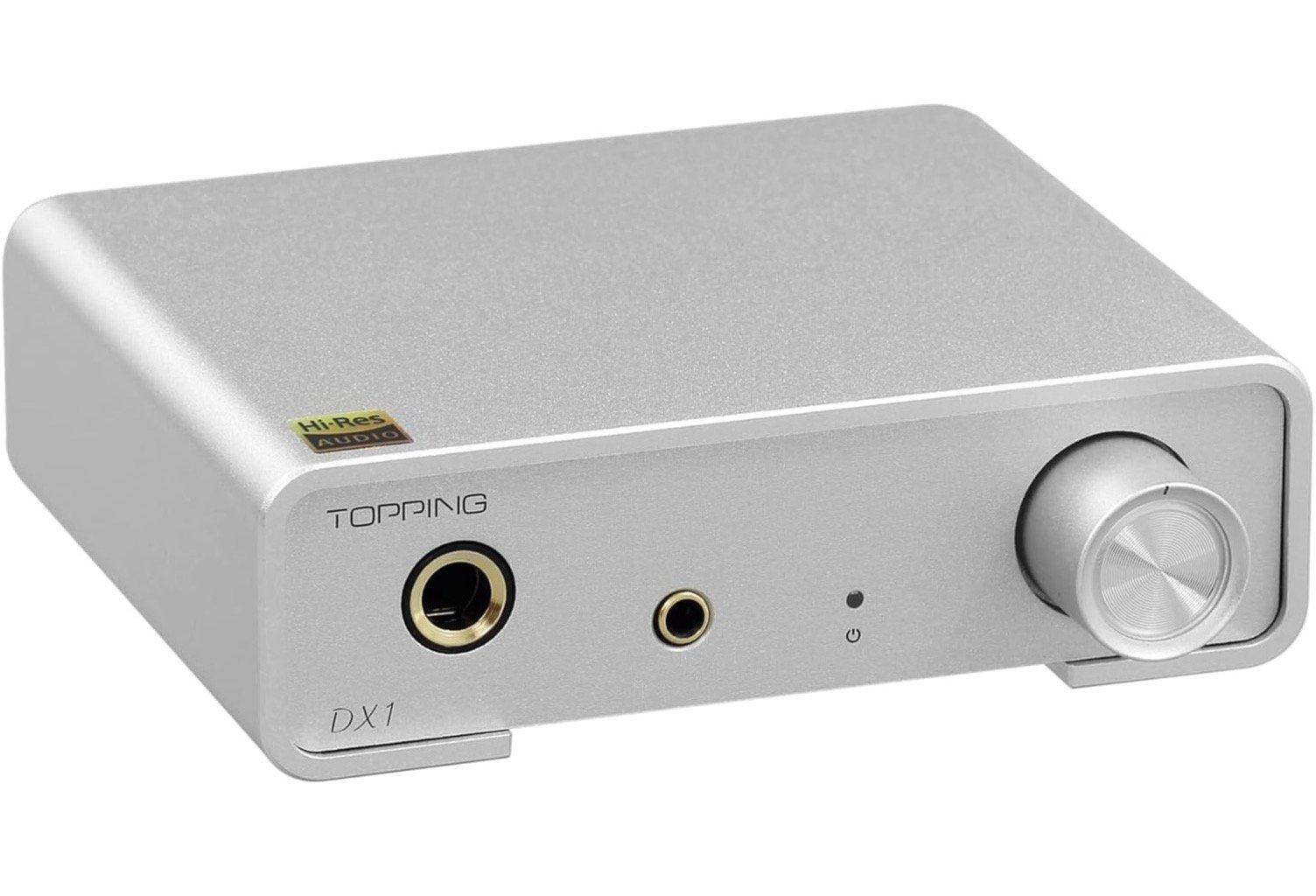
The Topping DX1 is a compact yet highly capable DAC and headphone amplifier combo that delivers a strong balance of performance and versatility. At the heart of the DX1 is the AK4493S DAC chip, part of AKM’s VELVET Sound series, which provides up to 32-bit/384kHz decoding with a 120dB dynamic range. This level of detail and resolution makes it a solid choice for high-fidelity music playback. It’s designed for both IEMs and full-size headphones, offering two gain settings and dual outputs (6.35mm and 3.5mm) for added flexibility. Despite its small size, it provides up to 280mW per channel at 32Ω and 51mW per channel at 300Ω, meaning it can handle a decent range of headphones. The discrete LNRD circuit is a standout inclusion as well—it filters out noise from USB power, keeping the background dead silent even with sensitive IEMs. Another convenient aspect is its plug-and-play functionality across multiple platforms, including Windows, macOS, Linux, and even mobile devices, making it easy to integrate into different setups without needing extra drivers (unless using Windows ASIO applications).
When I tested the DX1 with the HIFIMAN Sundara (a planar magnetic headphone with a 37Ω impedance known for its airy sound and detailed mids), I was pleasantly surprised by how well it handled dynamics and detail retrieval. Planar headphones typically benefit from good amplification, and while the DX1 isn’t the most powerful amp out there, it provided enough clean power to make the Sundara sound full and engaging. The bass had a good sense of control and extension, though not overly emphasized, which worked well for jazz and classical music. The midrange was where this pairing shined—vocals had a natural and lifelike quality, and instruments felt well-separated without sounding too analytical. Treble was crisp without being harsh, which I appreciated since some DACs can introduce a bit of glare in the highs. One thing I noticed was the exceptionally low noise floor—even with high-sensitivity IEMs, there was no audible hiss, which makes this a great choice for those who use both over-ear headphones and more delicate in-ear monitors.
In terms of design, the DX1 keeps things simple and functional. It has a small footprint, making it a great option for a clutter-free desktop setup. The aluminum casing feels well-built, and the front panel layout is clean, with the volume knob placed for easy access. I liked that Topping included both 6.35mm and 3.5mm headphone jacks, meaning I didn’t need an adapter when switching between different headphones. The gain switch is also positioned conveniently, making it easy to toggle between settings when switching from IEMs to higher-impedance headphones. One thing to note is that the RCA line output has a fixed volume, so if you’re pairing it with powered speakers or an external amp, you’ll need to control the volume from those devices rather than the DX1 itself. While this might be a limitation for some users, it does make it a purer DAC when used in that mode.
Comparing the DX1 to other DAC/amp combos in a similar range, I think it competes well with options like the iFi Zen DAC V2 and Schiit Modi/Magni stack. The iFi Zen DAC has a slightly warmer sound signature and more powerful balanced output, while the Schiit stack offers a bit more amplification power, but both are larger and slightly less convenient in terms of plug-and-play usability. Personally, I would go with the Topping DX1 if I wanted a clean, neutral-sounding DAC/amp with an ultra-low noise floor and the ability to work seamlessly across different operating systems without extra setup. I think that for someone looking for a simple, well-performing DAC/amp that works well with both IEMs and full-size headphones, the DX1 is a great option. It may not have the most powerful amp section, but its clean sound, practical design, and high-resolution support make it a strong choice for those wanting an affordable and reliable desktop audio upgrade.
#6 Most Versatile: Audioengine D1 DAC Amp Combo
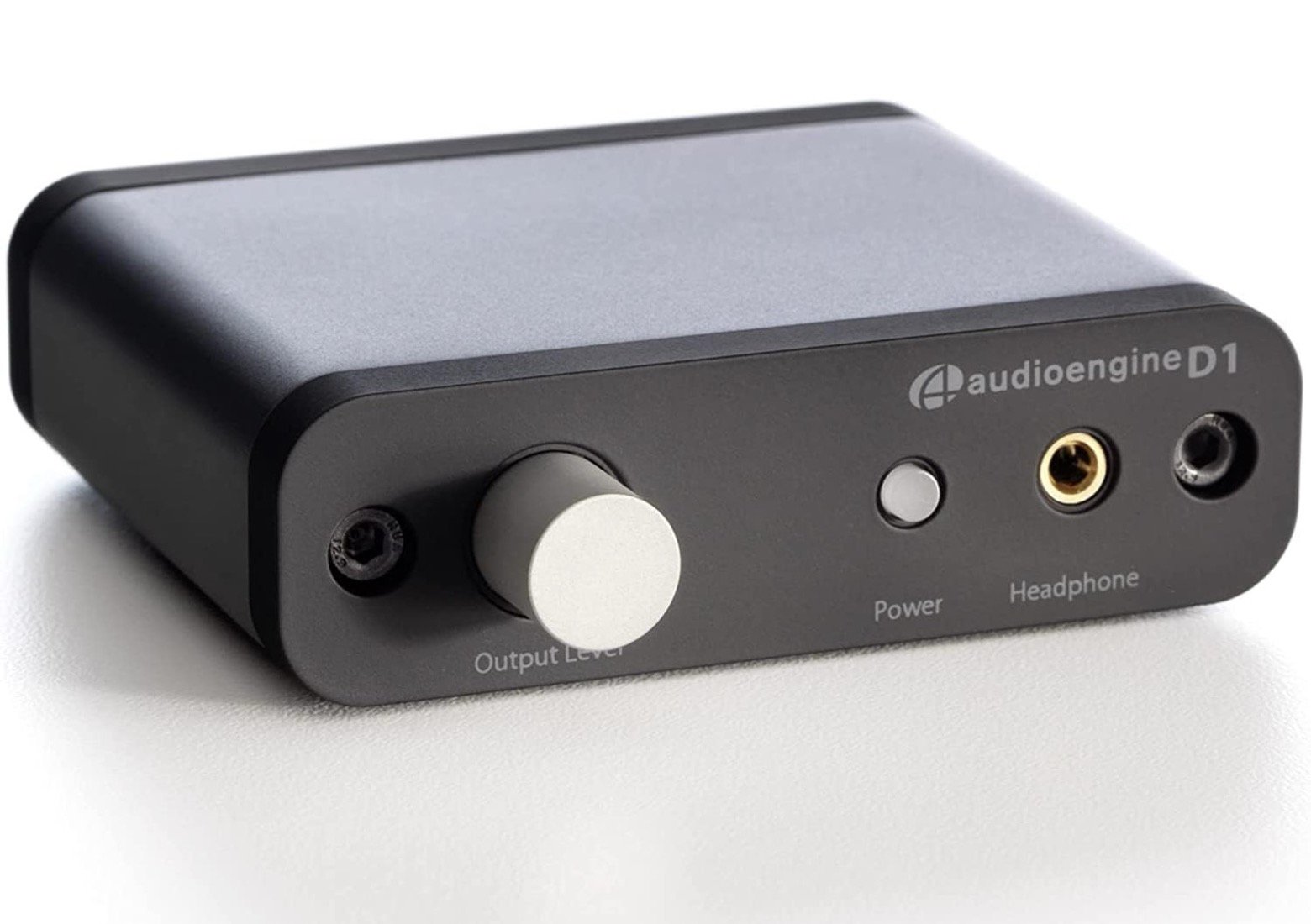
The Audioengine D1 is a compact and versatile desktop DAC and headphone amplifier designed to upgrade computer and digital audio without adding unnecessary complexity. It supports 32-bit audio processing and can handle sample rates up to 192kHz, making it a strong choice for high-resolution playback. The D1 uses an optical and USB input for direct connection to a computer, gaming console, or other digital sources, while the RCA and 3.5mm headphone outputs make it easy to switch between speakers and headphones. It’s also USB-powered, meaning no external power adapter is required, which is great for keeping things simple on a desktop setup. With a built-in headphone amp, it provides enough power to drive a range of headphones, though it’s best suited for low-to-mid impedance models rather than particularly power-hungry options.
When I tested the Audioengine D1 with the Sennheiser HD 599 (a 50-ohm open-back headphone with a warm and balanced sound), I immediately noticed an improvement in clarity compared to my laptop’s built-in audio. The D1 delivered a more refined and spacious sound, particularly in the midrange, where vocals and acoustic instruments felt more textured and lifelike. Bass was tight and controlled without being overpowering, which worked well for jazz and classical music, though for bass-heavy genres like electronic or hip-hop, some listeners might prefer a DAC with a bit more low-end weight. Treble had good detail without becoming harsh, making longer listening sessions comfortable. One thing I appreciated was how silent the background was—there was no audible hiss or distortion, even when using more sensitive in-ear monitors, which speaks to the quality of the internal components. Gaming was also an enjoyable experience, with improved positional accuracy in sound cues, making it easier to pick up environmental details in open-world games.
The design of the Audioengine D1 is compact and minimalist. The aluminum chassis has a solid, premium feel while remaining lightweight and compact, making it easy to fit into a desktop setup without taking up much space. The volume knob is smooth and precise, which I liked since it allowed for fine adjustments without sudden jumps in loudness. Having both optical and USB inputs adds a layer of flexibility that not all DAC/amp combos in this price range offer, and I liked how easy it was to switch between using it with headphones or a set of powered speakers through the RCA outputs. The fact that it runs off USB power is convenient, especially for those who want to use it in different setups without dealing with extra cables or power bricks, though that also means it doesn’t provide the same level of power output as some externally powered DAC/amps.
Compared to other DAC/amp combos in a similar range, I think the Audioengine D1 is a great choice for those who want something simple and effective without extra frills. It’s not as powerful as something like the Schiit Magni/Modi stack, which offers more amplification headroom for high-impedance headphones, and it doesn’t have the advanced digital processing features found in gaming-oriented DACs like the Sound BlasterX G6. However, if you’re looking for a clean and natural sound with minimal setup hassle, the D1 does a great job. Personally, I would go with the D1 if I wanted an easy-to-use DAC/amp that improves both music and gaming audio without requiring additional power supplies or software. I think that for someone who values simplicity and high-quality sound in a compact package, the D1 is a strong contender, especially if you’re pairing it with powered speakers or efficient headphones.
#7 Most Portable: Qudelix-5K DAC Amp Combo
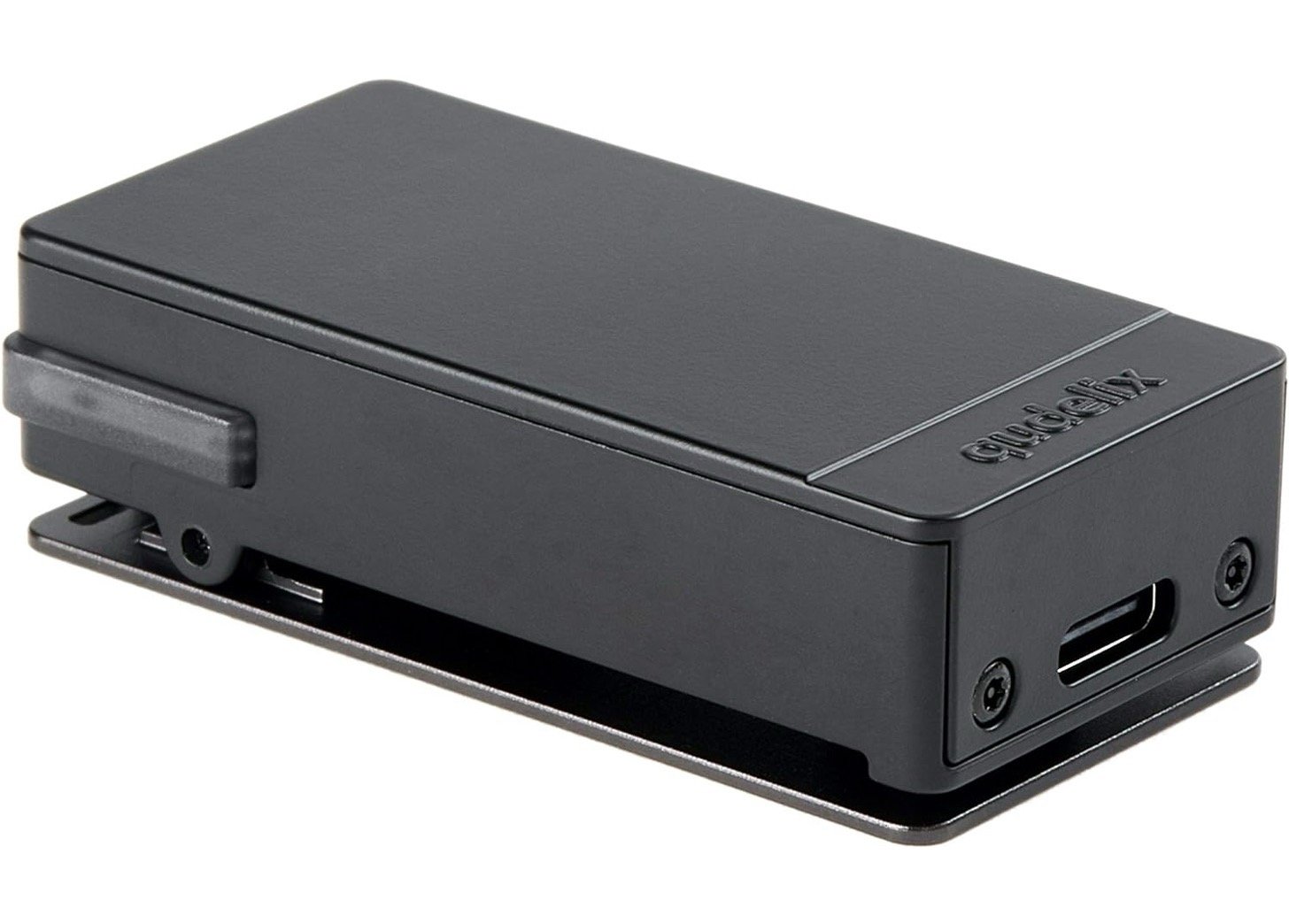
The Qudelix-5K is a compact Bluetooth and USB DAC amp combo designed for those who want high-quality sound in a portable package. It uses a dual ES9219 DAC configuration, which allows for both a balanced 2.5mm (4V RMS) and an unbalanced 3.5mm (2V RMS) output, providing flexibility depending on the type of headphones being used. The Qualcomm QCC5124 Bluetooth chipset supports a wide range of high-resolution codecs, including LDAC, aptX Adaptive, aptX HD, and AAC, making it a great option for wireless audio without sacrificing too much sound quality. When used as a USB DAC, it supports 96kHz/24-bit playback, which isn’t the absolute highest resolution available but is more than enough for most listening scenarios. Battery life ranges between 6 to 20 hours, depending on usage, and the device is small and lightweight at just 25 grams, making it easy to clip onto a shirt or bag for portable use.
When I tested the Qudelix-5K with the Moondrop Blessing 2 (a hybrid in-ear monitor with a neutral and detailed tuning), I was impressed by how clean and transparent the sound was. Over Bluetooth with LDAC, the difference between a wired connection and wireless playback was surprisingly small, with only a slight loss of depth in the lower frequencies. The bass was tight and well-controlled, the mids had excellent clarity, and the treble was crisp without being harsh. Switching to the balanced 2.5mm output provided a bit more headroom and a blacker background, making the Blessing 2 sound even more refined. Using it as a wired USB DAC brought out even more detail, especially in the microdynamics of vocals and acoustic instruments. I also experimented with the built-in equalizer through the Qudelix app, which was one of the most precise and customizable I’ve used on a portable DAC/amp. Being able to tweak the sound with a double-precision EQ made it easier to adjust for different headphones or personal preferences.
The design of the Qudelix-5K is functional and well-thought-out for a portable device. The plastic body with an anti-scratch UV coating feels durable enough for daily use, and the aluminum clip makes it easy to attach to clothing or a backpack strap. The size is small enough to be unobtrusive, yet it doesn’t feel overly fragile. The LED indicators give quick visual feedback on battery life and connection status, which is useful when switching between Bluetooth and USB modes. The control buttons are straightforward, allowing for volume adjustments and playback controls without needing to reach for a phone or computer. One of the most convenient aspects is the app integration—the Qudelix app provides deep control over settings like gain levels, output modes, and equalizer adjustments, making it much more customizable than many competing portable DAC/amps.
Compared to other portable DAC/amps in its class, I would say that the Qudelix-5K is one of the most well-rounded DAC amp combo options available. Something like the FiiO BTR5 offers a similar feature set but lacks the same level of app control and precision EQ. The EarStudio ES100 is another strong competitor, but the Qudelix-5K provides better Bluetooth codec support and a more refined DAC implementation. Personally, I would go with the Qudelix-5K if I wanted a small, high-quality DAC/amp that works seamlessly in both wired and wireless modes. I think that for anyone looking for a versatile, pocket-friendly DAC that doesn’t compromise on sound quality, this is one of the best choices out there. Whether for casual listening, gaming, or serious audiophile use, the combination of a clean DAC, powerful amp section, and extensive customization makes it a standout device.
#8 Best Surround Sound: Creative Sound Blaster X4 DAC Amp Combo
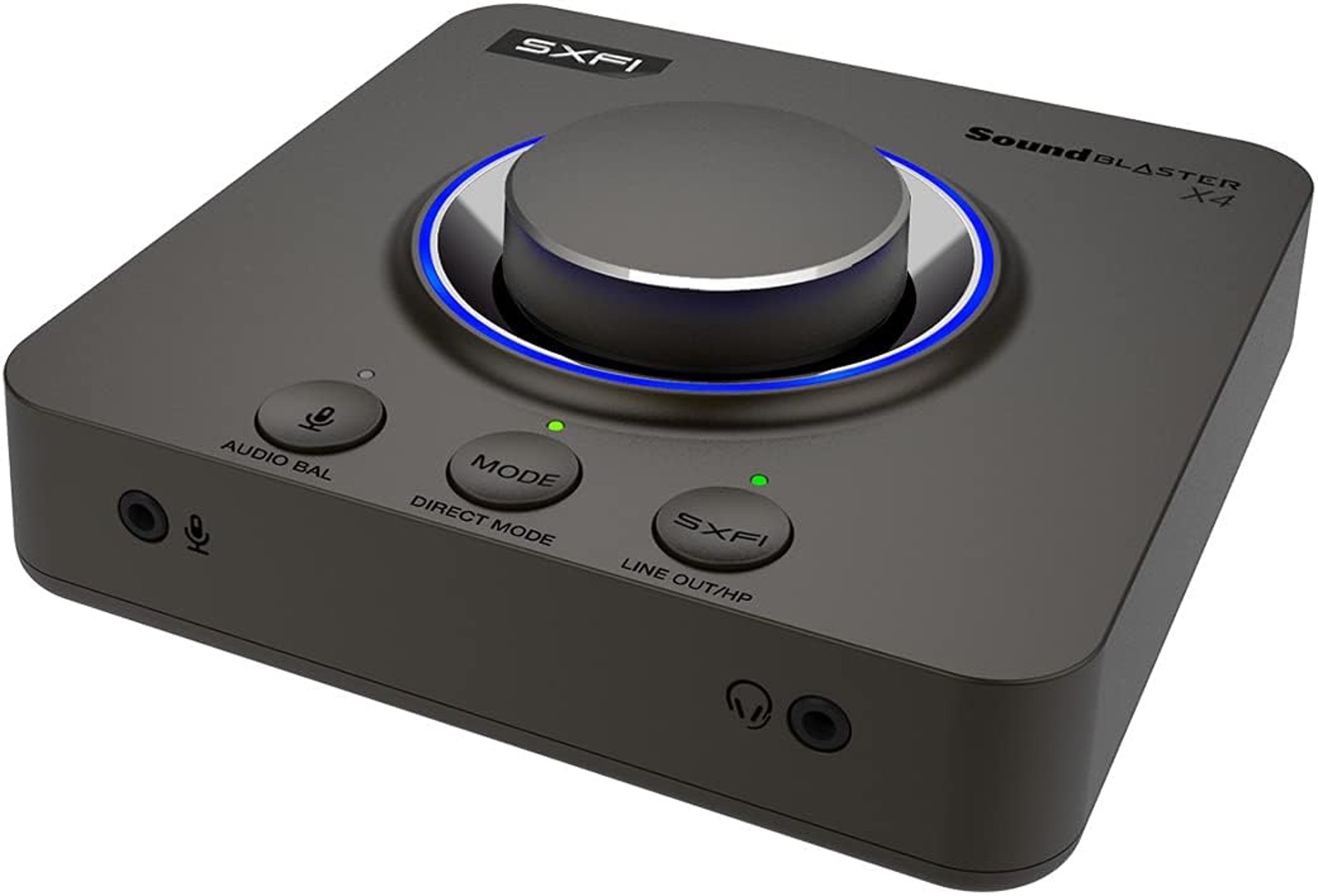
The Creative Sound Blaster X4 is a versatile external USB DAC and amplifier that blends high-resolution audio performance with advanced gaming and communication features. It supports 7.1 discrete surround sound for multi-channel speaker setups and offers virtual surround processing for headphones, making it a great option for immersive audio experiences. The Super X-Fi and Dolby Digital Live processing enhances spatial audio, which is especially useful for gaming and movies. The 114dB SNR and 192kHz/24-bit playback mean that it delivers clean, detailed sound, while the built-in headphone amp can drive studio-grade headphones up to 600Ω, giving it plenty of flexibility. Connectivity is another strong point, with USB-C powering the unit and an optical-in port allowing easy integration with gaming consoles, PCs, and speaker systems. The SmartComms Kit adds useful voice communication enhancements like VoiceDetect for automatic mic muting and NoiseClean for reducing background noise, making it an appealing choice for both work and play.
When I tested the Sound Blaster X4 with the Beyerdynamic DT 990 Pro (250Ω), I was surprised by how well it handled both music and gaming. The DT 990 Pro is known for its spacious soundstage and bright treble, and with the X4, I noticed that the highs remained crisp without becoming fatiguing, while the bass felt controlled yet punchy. Super X-Fi made a noticeable difference in FPS games, giving gunfire and footsteps a more realistic placement within the soundstage, making it easier to track opponents. The SXFI Battle Mode added an extra layer of spatial awareness, though I preferred the Scout Mode for competitive gaming since it boosted the details of distant sounds like footsteps. For music, I switched to Direct Mode, which bypassed all processing and delivered a more natural and balanced sound. The amp had enough power to drive the DT 990 Pro to satisfying volume levels without distortion, though I wouldn’t say it had the same level of refinement as some dedicated audiophile amps in terms of microdetail retrieval.
The design of the Sound Blaster X4 is both practical and intuitive. The large volume knob feels smooth to adjust and also doubles as a balance control, letting me fine-tune audio from multiple sources without diving into software menus. The headphone and speaker switch button was another convenient feature, allowing me to toggle between outputs instantly without unplugging cables. There are also three customizable EQ buttons, which I found useful for quickly switching between preset sound profiles depending on what I was listening to. The SmartComms Kit was a surprisingly useful addition—I tested the NoiseClean feature during a video call, and it significantly reduced background noise, making conversations clearer without making voices sound unnatural. The build is solid, though it’s primarily plastic, which makes it lightweight but not as premium-feeling as some metal-cased DACs.
Compared to other DAC/amp combos in its price range, I think the Sound Blaster X4 is a great all-rounder that balances gaming and music features better than most. Something like the Schiit Hel 2 has a more powerful amp and a more neutral sound, but it lacks the surround sound processing and voice communication tools that make the X4 so versatile. The Fiio K5 Pro ESS delivers purer audio with a better DAC, but it doesn’t have the same level of connectivity or gaming-oriented features. Personally, I would go with the Sound Blaster X4 if I wanted an external DAC/amp that works well for both gaming and music while keeping voice communication in mind. I think that for someone looking for a solid upgrade for PC, console, and even home theater setups, the X4 offers a great mix of power, flexibility, and software control, making it a strong choice for those who want more than just an amplifier.
#9 Best for HDMI ARC: Fosi Audio ZD3 DAC Amp Combo
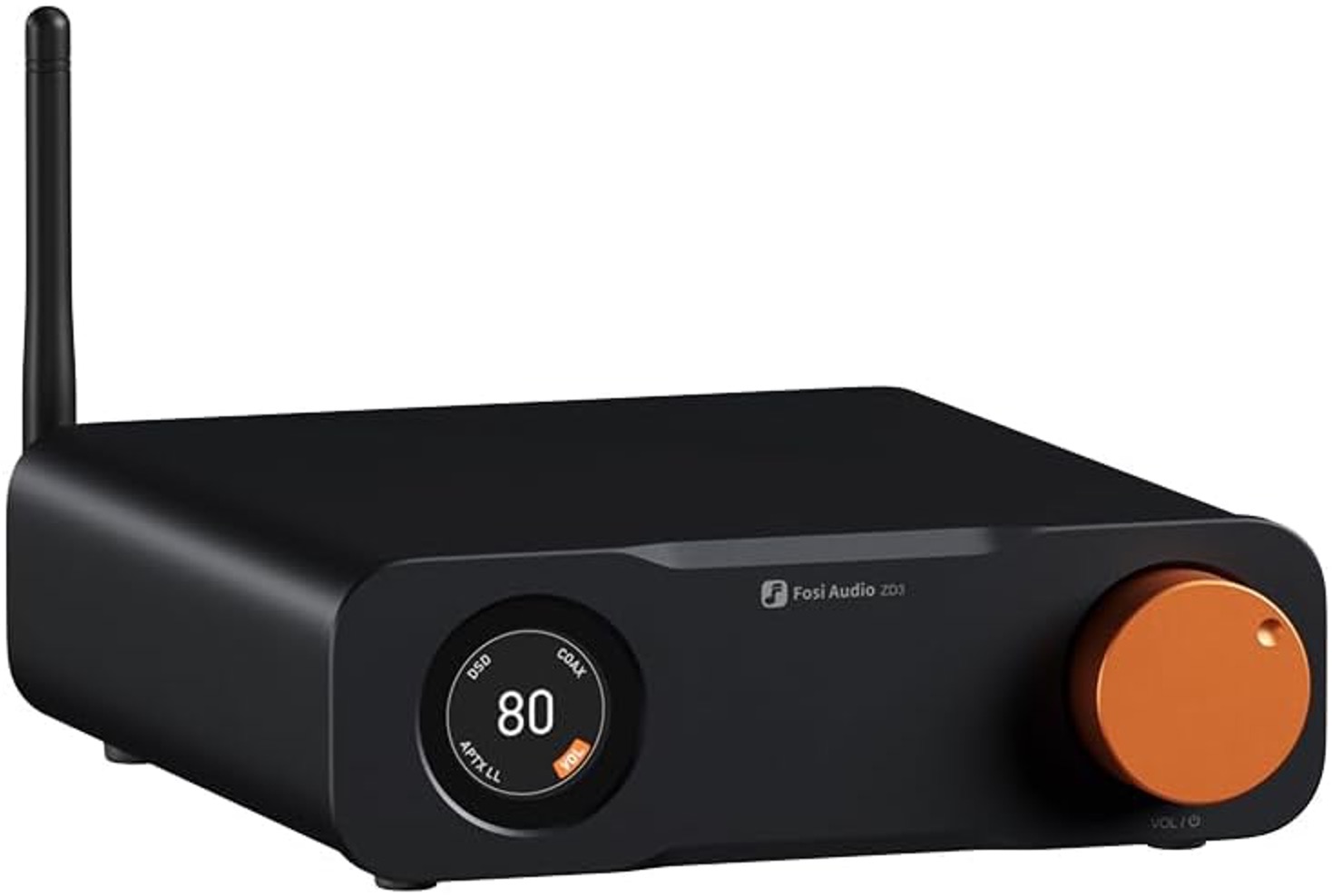
The Fosi Audio ZD3 is a high-performance desktop DAC and preamp combo designed for audiophiles looking for flexibility and high-resolution sound. It features the ES9039Q2M DAC chip, which supports PCM up to 32-bit/768kHz and DSD512, making it one of the most capable DACs in its class for handling high-resolution audio. The XMOS XU316 and QCC3031 Bluetooth chipset add strong digital processing and wireless connectivity, allowing for both wired and Bluetooth playback. What makes the ZD3 particularly versatile is its wide range of input options, including USB, Optical, Coaxial, HDMI ARC, and Bluetooth, as well as both balanced XLR and RCA outputs. The HDMI ARC functionality is a rare inclusion in desktop DACs, making it a great option for integrating into a home theater system. It also comes with a preamp bypass switch, a remote control, and a 1.5-inch OLED display, giving it a mix of high-end audio performance and user-friendly operation.
When I tested the ZD3 with the Sennheiser HD 660S (150Ω), I immediately noticed how detailed and spacious the sound felt. The HD 660S is known for its smooth midrange and controlled treble, and the ZD3 did a great job of bringing out microdetails in the upper mids and highs while keeping the bass tight and natural. The soundstage felt wide, with good instrument separation that made live recordings and orchestral tracks more immersive. When switching to a Bluetooth LDAC source, I was surprised by how clean and dynamic the sound remained—while it wasn’t quite as detailed as a wired connection, the difference was subtle, and I could see myself using Bluetooth for casual listening without feeling like I was losing much fidelity. With high-resolution DSD files, the ZD3 retained a level of depth and layering that made acoustic and vocal-heavy tracks sound lifelike. It had no problem driving the HD 660S, delivering enough power and headroom without distortion, and the balanced XLR output provided an even cleaner, more dynamic presentation compared to RCA.
The design of the ZD3 is compact yet refined, fitting well into a desktop or home audio setup. It shares the same aesthetic as Fosi Audio’s ZA3 amplifier, making it a great companion piece for those looking to build a matching audio system. The 1.5-inch OLED display is clear and easy to read, displaying key information like sample rate, input source, and volume level without clutter. The included remote control is a nice touch, allowing for quick adjustments from a distance, especially when using the ZD3 as part of a home theater system via HDMI ARC. I liked the preamp bypass switch, which gives the option to use the ZD3 purely as a DAC or as a preamp depending on the setup. The 12V trigger in/out feature is another useful addition, allowing synchronized power on/off with other components for a more seamless experience. Despite its small footprint, the build quality feels solid, with a metal chassis that gives it a premium feel without making it overly heavy.
Compared to other DAC/preamp combos, I think the ZD3 competes well in both versatility and sound quality. The Topping E50 offers similar high-resolution support, but it lacks HDMI ARC and a remote, making the ZD3 the better choice for home theater integration. The Schiit Modius is another competitor with a more analog-focused sound, but personally, I would go with the ZD3 for its modern connectivity and flexibility. I think that for anyone who wants a high-performance DAC that works seamlessly in both music and home theater setups, the ZD3 is an excellent option. It delivers high-resolution playback, great usability, and a balanced, transparent sound that works well with a variety of headphones and speaker systems. Whether using it as a desktop DAC, a Bluetooth streamer, or part of a multi-channel setup, it has the right combination of features and performance to make it a compelling choice in its price range.
#10 Best Budget: Syba Sonic DAC Amp Combo
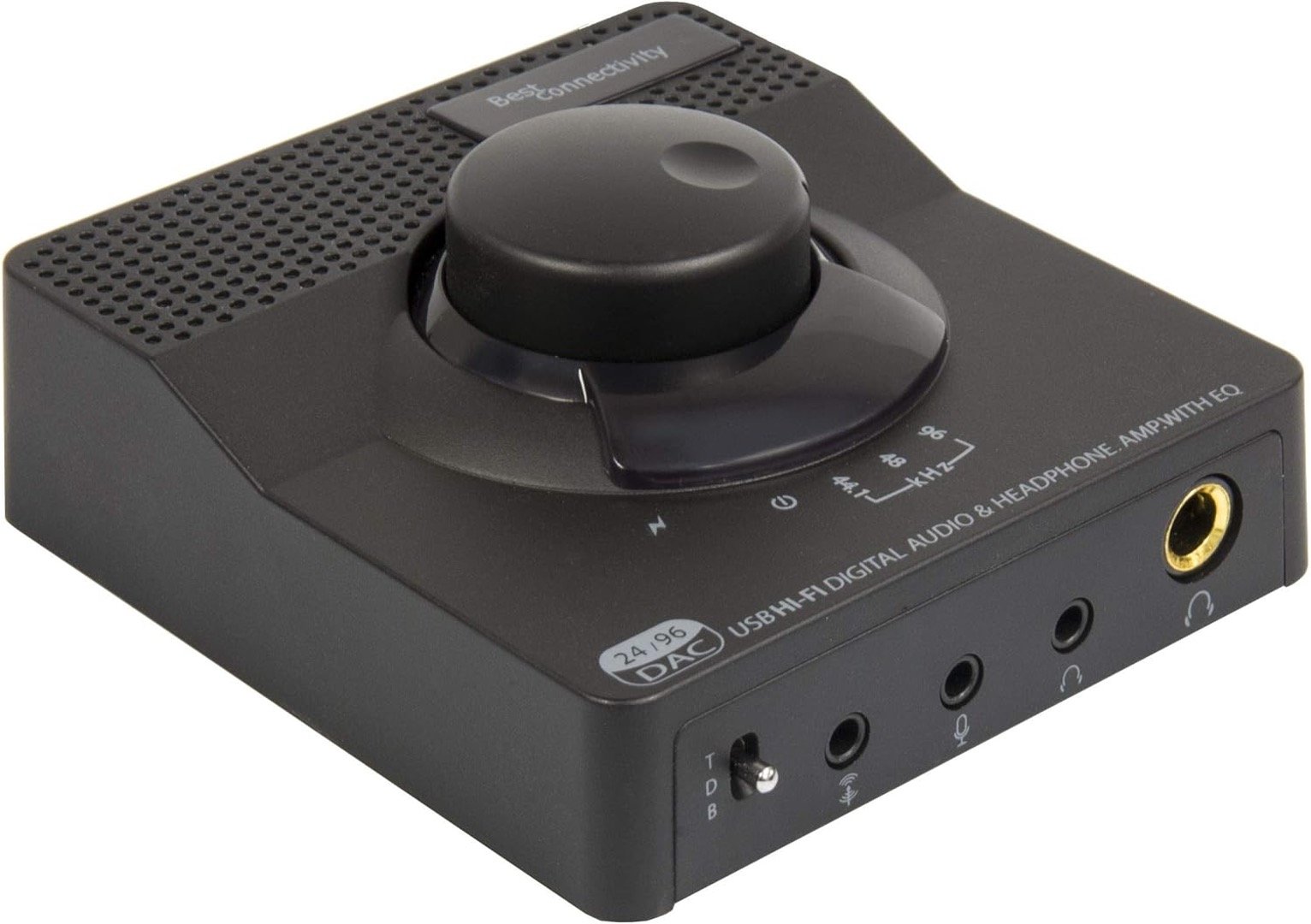
The Syba Sonic 24-bit 96kHz USB DAC and headphone amplifier combo is a compact and budget-friendly solution for those looking to improve their desktop audio experience without breaking the bank. It is built around the CM6533 intelligent noise reduction chip, which helps filter out unwanted interference, producing cleaner and fuller sound quality. The DAC supports high-resolution playback up to 24-bit/96kHz, making it a step up from standard onboard audio. It offers a decent range of connectivity options, including a 3.5mm analog line-in that doubles as a microphone input, RCA analog outputs for speaker connections, and both 6.35mm and 3.5mm headphone jacks. The TI LM358 op-amp handles amplification, giving the unit enough power to drive most low-to-mid impedance headphones, though it may struggle with more demanding models. The mini USB interface makes it easy to integrate with a variety of devices, particularly for PC users who want a simple plug-and-play upgrade.
When I tested the Syba Sonic DAC with the Audio-Technica ATH-M40x (35Ω impedance), I noticed an immediate improvement over my laptop’s built-in headphone output. The bass felt tighter and better controlled, while the midrange had a bit more clarity, especially in vocal-heavy tracks. High frequencies were smooth, though slightly rolled off, which made long listening sessions fatigue-free but might not satisfy those who prefer a more analytical sound signature. In gaming, I found that positional audio was clearer compared to onboard sound, which helped in immersive single-player games where environmental details matter. However, since this DAC doesn’t offer virtual surround processing, it may not be the best choice for competitive FPS players who rely on enhanced spatial awareness. With music, I appreciated the lack of noticeable noise or distortion, even at higher volumes, though the overall power output felt somewhat limited, meaning it might not be the best fit for high-impedance headphones or planar magnetic designs.
The design of the Syba Sonic DAC is straightforward and practical, making it a good option for users who want something simple and effective. The metal casing gives it a sturdy feel, though its overall footprint is small enough to fit neatly on a desk without taking up much space. The dual headphone jacks (6.35mm and 3.5mm) are a nice touch, allowing users to switch between different headphone types without needing an adapter. I liked the auto-switching feature, where plugging into the 3.5mm jack disables the 6.35mm output—this makes swapping between headphones seamless. The mini USB connection is functional, though I would have preferred USB-C for a more modern and widely compatible interface. The RCA outputs add some extra flexibility, making it possible to connect to powered speakers, though I found that the output level wasn’t as strong as some other DACs in this range.
With that said, the Syba Sonic DAC delivers a solid improvement over onboard audio but has some limitations when put up against more powerful alternatives. The Fiio K3 or Topping DX1 (as discussed above) offer more refined DAC implementations with better output power, while something like the Schiit Fulla 3 provides a warmer sound with a stronger amp section. Personally, I would go with the Syba Sonic if I wanted an affordable way to clean up my audio without needing extra software or drivers. I think that for someone looking for a simple plug-and-play DAC for casual music listening, gaming, and desktop audio upgrades, this is a great choice. However, if you have higher-impedance headphones or want more advanced processing features, you might want to explore other options in a slightly higher price bracket. For an entry-level DAC with a clean, noise-free signal and an easy setup, the Syba Sonic delivers exactly what it promises.

